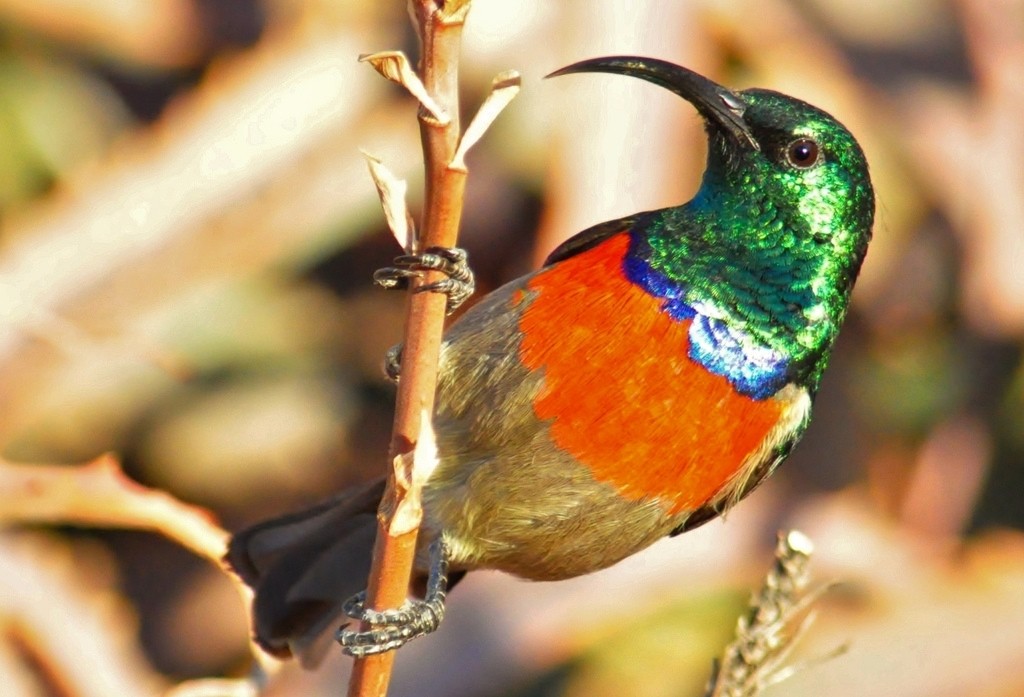Greater Double-collared Sunbird
A species of Double-collared Sunbirds and Allies Scientific name : Cinnyris afer Genus : Double-collared Sunbirds and Allies
Greater Double-collared Sunbird, A species of Double-collared Sunbirds and Allies
Botanical name: Cinnyris afer
Genus: Double-collared Sunbirds and Allies
Content
Description General Info
 Photo By Gareth Rasberry , used under CC-BY-SA-3.0 /Cropped and compressed from original
Photo By Gareth Rasberry , used under CC-BY-SA-3.0 /Cropped and compressed from original Description
The sunbird is 14 cm long. The adult male has a glossy, metallic green head, throat upper breast and back. It has a broad brilliant red band across the chest, separated from the green breast by a narrow metallic blue band. The rest of the underparts are pale grey. When displaying, yellow feather tufts can be seen on the shoulders. As with other sunbirds the bill is long and decurved. The bill, legs and feet are black. The eye is dark brown. The male can be distinguished from the similar lesser double-collared sunbird by the latter's smaller size, narrower red chest band and shorter bill. The call is a hard chut-chut-chut, and the song is a high pitched jumble of tweets and twitters, richer than the calls of the lesser double-collared sunbird. 
Size
13 cm
Nest Placement
Tree
Feeding Habits
Greater Double-collared Sunbird primarily feeds on nectar, utilizing hovering and perching techniques. Its diet also includes fruit, insects, and spiders, with a noteworthy behavior of extracting spiders from webs, especially during the breeding season to feed its young.
Habitat
Greater Double-collared Sunbird thrives in a variety of open habitats ranging from lowland coastal plains to the borders of Afromontane forests. They are commonly found in environments that include succulent karoo, Protea-dominated savanna, and fynbos areas, as well as moist woodland. Additionally, these birds adapt well to human-modified landscapes and are frequent visitors to parks and gardens. Their geographical range encompasses broader southern African regions, where they are mostly resident, though they exhibit partial migratory behavior in northeastern areas.
Dite type
Nectivorous
General Info
Feeding Habits
Bird food type
Behavior
The sunbird is usually seen singly or in pairs. Its flight is fast and direct on short wings. 
Distribution Area
The sunbird breeds in southern South Africa. It is mainly resident, but partly migratory in the northeast of its range. It is common in gardens, fynbos, forest edges and coastal scrub. 
Species Status
Not globally threatened.
Scientific Classification
Phylum
Chordates Class
Birds Order
Perching birds Family
Sunbirds and spiderhunters Species
Greater Double-collared Sunbird